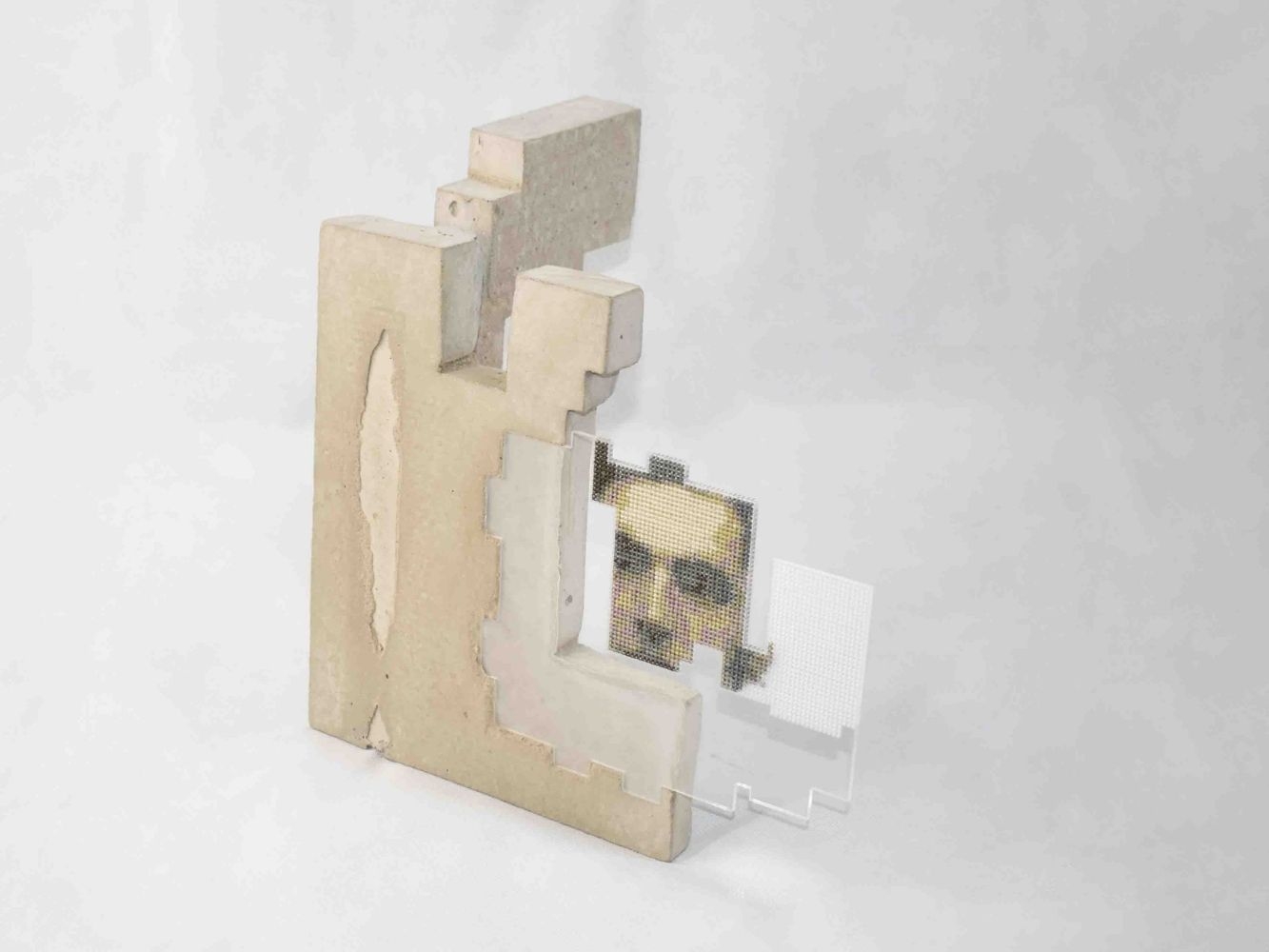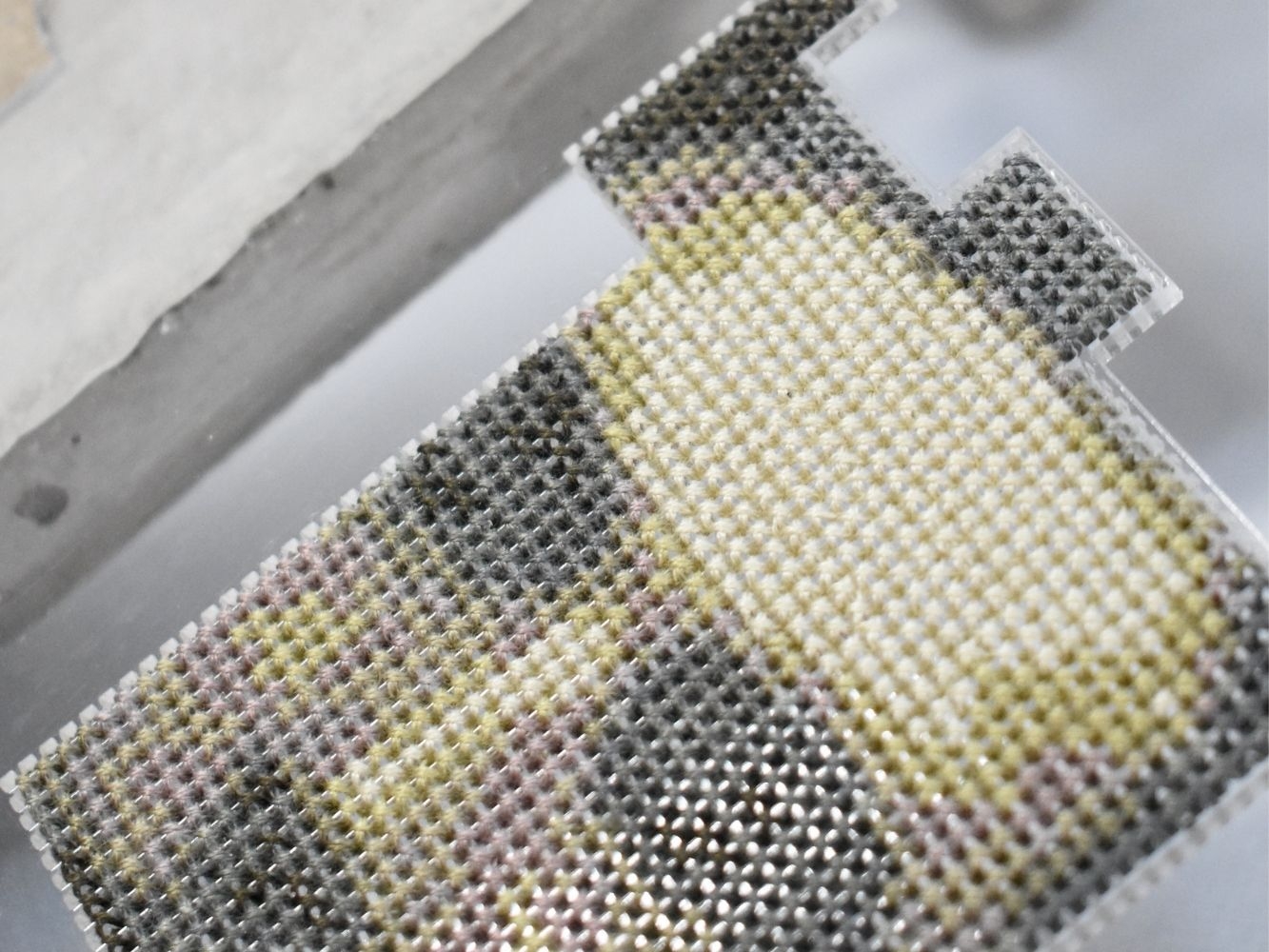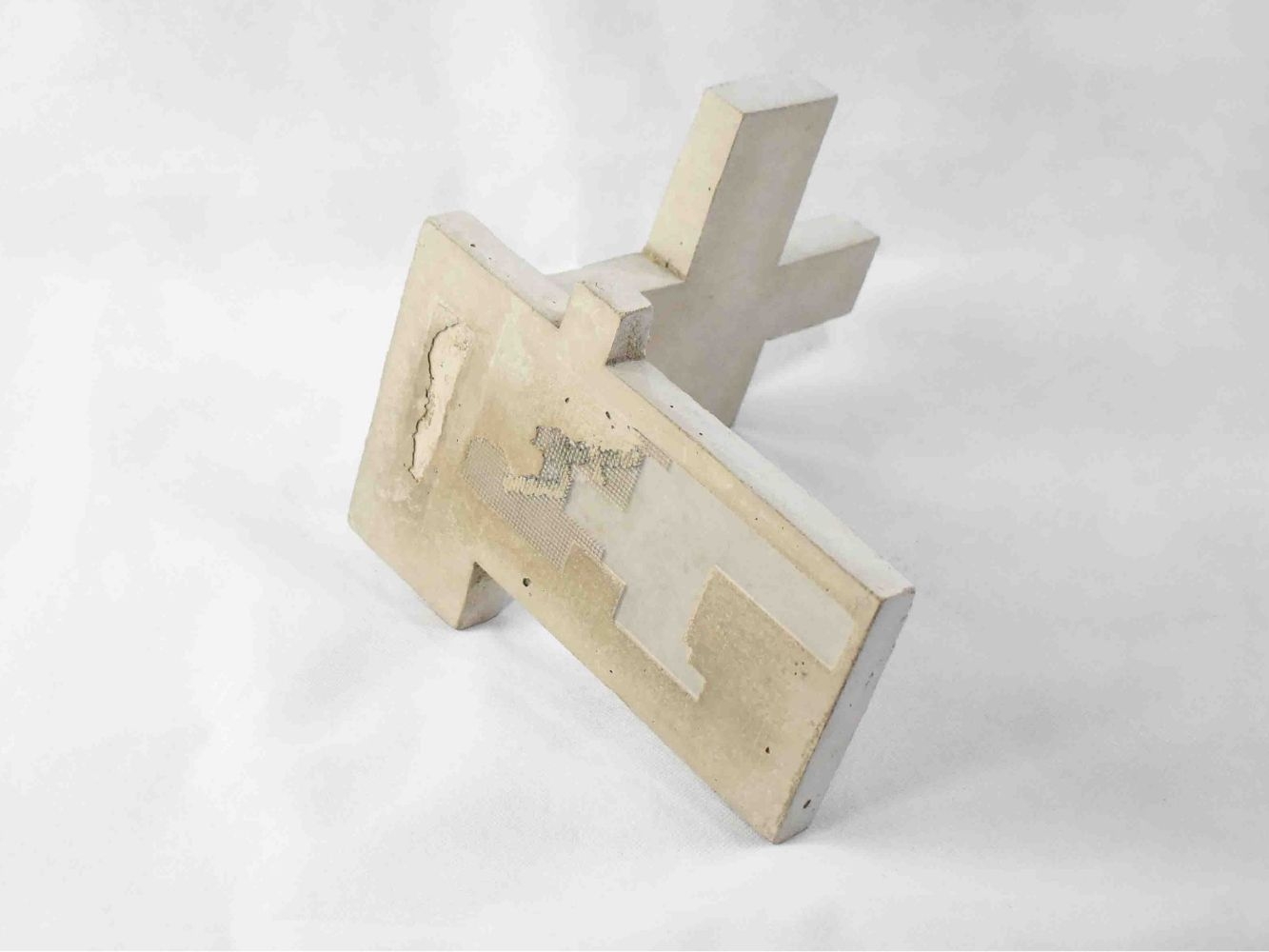Julija Astasonoka - Textiles

Julija, who is originally from Latvia, moved to Scotland ten years ago. She now proudly calls Scotland her home and is graduating with a Distinction in MA Fashion & Textiles.
The idea for Julija's MA project emerged when she discovered her family’s photo archive which captured religious funeral rituals dating from 1955 to 1981 in Soviet Latvia. Within her project, Julija explores the sensitive and complex relationships between space, memory, and family, as well as the uncanny psychological experiences within such a taboo context.
For this exhibition, Julija presents abstract concrete sculptures embodied with hand embroidery. The art pieces visually remind her of Soviet memorialisation, brutalist architecture and Russian Avant-garde which are her main inspirations.
Speaking about the pandemic, Julija says students worked remotely in limited conditions during COVID. They did not expect to publicly show their work yet this exhibition proves that creativity has no limits. Working in isolation, students have produced honest and very personal artwork to a high standard.
She believes the MA Postgraduate Degree show is very special and long waited as it the first live show after the lockdown, something that will re-unite people in a difficult time.
She thanks the academic and technical staff at Gray's School of Art for providing endless support throughout saying they have made her experience safe, enjoyable, and extremely cognitive. She welcomes the opportunity to have become more independent, focussed, motivated and disciplined.



